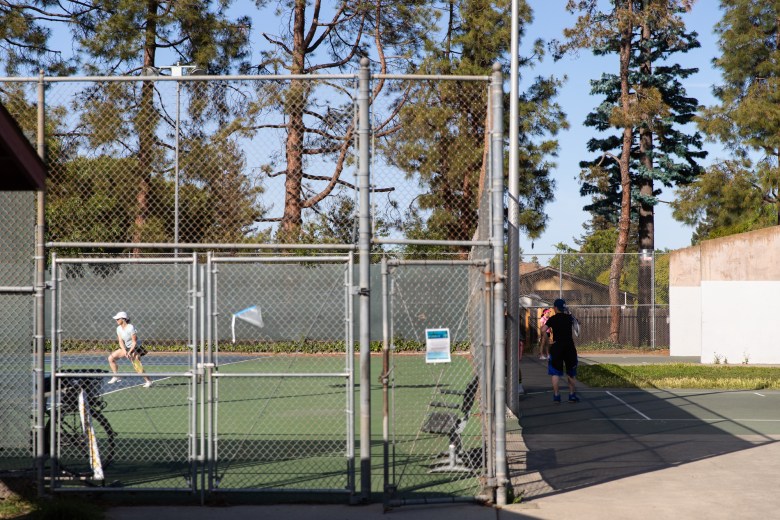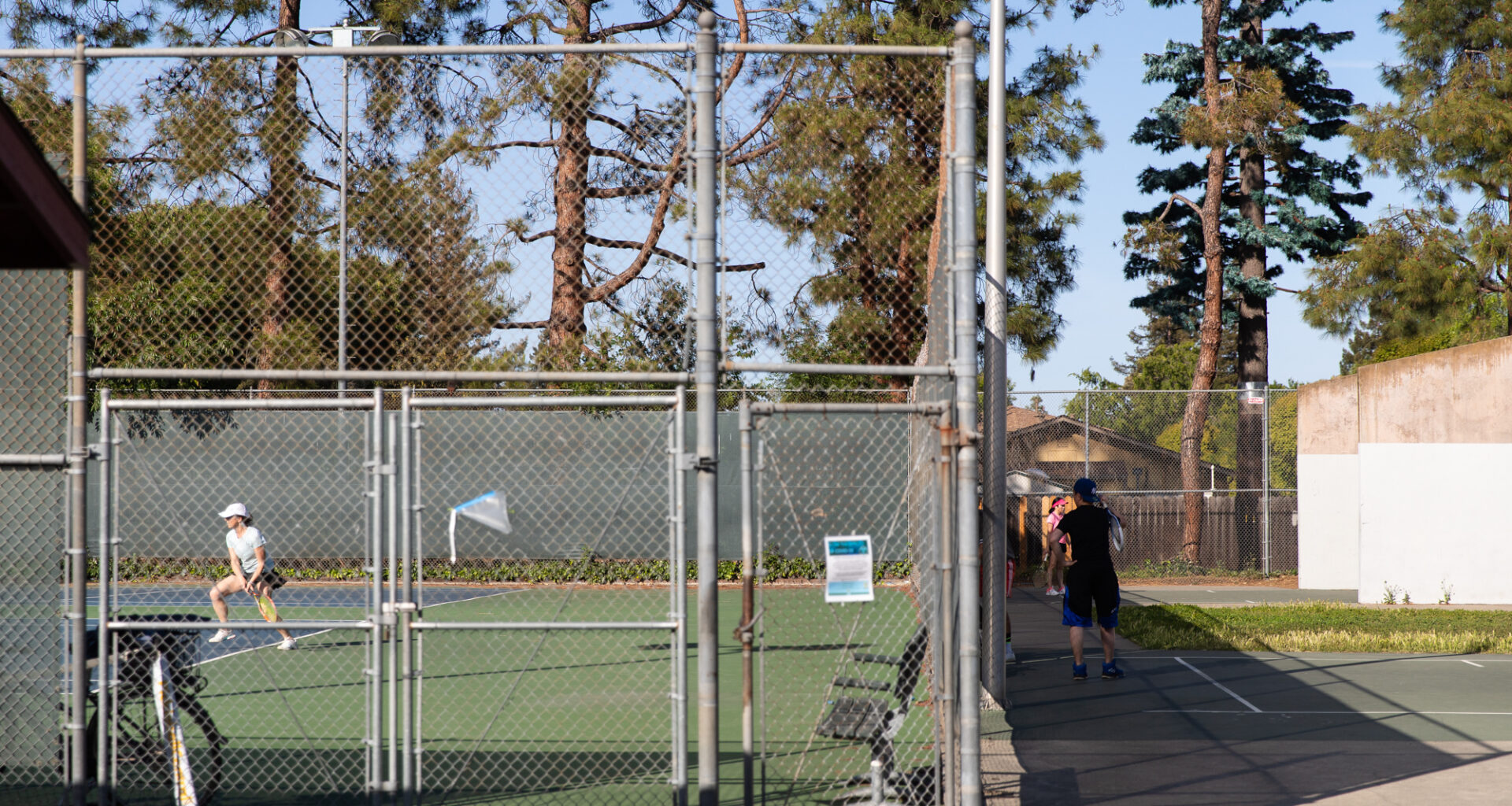 A woman plays tennis while other athletes arrive at the squash courts at Mitchell Park in Palo Alto on May 6, 2020. Photo by Magali Gauthier.
A woman plays tennis while other athletes arrive at the squash courts at Mitchell Park in Palo Alto on May 6, 2020. Photo by Magali Gauthier.
Palo Alto will soon require tennis teams to meet a residency requirement to reserve city-owned courts, following complaints that the existing first-come, first-served system allowed out-of-town teams to monopolize the courts.
The policy update from the Parks and Recreation Commission is scheduled to take effect at the start of next year following approval from City Manager Ed Shikada. It is the second policy change to hit the tennis courts this month, after the Palo Alto Unified School District announced it will end its contract with the city over tennis court reservations starting Nov. 11.
Under the new language, United States Tennis Association teams must prove that at least a quarter of their roster lives in Palo Alto in order to reserve a city-owned court. The city found that only a third of the 93 USTA teams that play in Palo Alto would be eligible based on roster information from the spring, validating complaints from residents that out-of-towners were clogging the court reservation queue. USTA teams will still be able to reserve up to 50% of the courts for matches at any one location in the city, so long as they meet the residency minimum.
In the case of competing reservations, priority will be given to the team with more Palo Alto residents.
“Our courts have become very popular,” said Commission Chair Nellis Freeman at the meeting Tuesday night. “Not having a limit on our system has made our system more attractive for people to be able to take advantage of it.”
To prove and enforce the residency requirement, Palo Alto Senior Community Services Manager Adam Howard told the commission that the city will rely on residency proof submitted with the rosters each season, such as utility bills. The city will also track down tips from the community about teams that may be skirting the rules.
Teams found in violation of the policy will not be able to reserve courts for the next season, and repeat offenders could be banned permanently.
The Parks and Recreation Commission seemed generally supportive of the idea to prioritize residents on the courts, but some community members who spoke out at the meeting felt otherwise.
Ieda Garcia, a tennis coach at Castilleja School, said the residency requirement will make play difficult because so many people commute into Palo Alto from neighboring cities.
“People live in San Mateo, they live in Burlingame, and they work in Palo Alto, so we travel for tennis and we play where we’re closer during the week,” she told the commission.
Meanwhile, the commission also weighed resident complaints about long wait times at the courts with players’ request that the reservation window be extended from two hours to three.
Staff initially proposed a two-hour cap for any match reservation, but the commission ultimately opted for language that allowed flexibility up to three hours per match.
The updated courts policy also formalizes reservation and access for Palo Alto-based youth organizations, which already regularly book courts but lack the explicit language in existing city policy. Palo Alto-based youth groups are limited to four days per week and two hours per day. As for USTA teams, youth organizations are also capped at reserving 50% of courts at any one location.
The commission voted to forward the policy to the City Manager for approval, with Commissioner Yudy Deng abstaining and Vice Chair Jeff Greenfield voting against it. Greenfield said there were too many substantive changes that would be added in based on Tuesday night’s discussion — such as the extension from two to three hours for reservations — and the commission would not have an opportunity to review the amended policy before it went before Shikada.
Once the finalized policy is approved by Shikada, staff and the commission will come back together next year for a formal review of the policy to measure its success.
“There’s people that want to play USTA, there’s people that want to take lessons, there’s people that want to drop in, and what we’re really trying to do is find the middle ground so all of them have that participation right,” Howard said. “One of the goals we’re looking for is: does everyone, regardless of how they want to use the courts, have that ability?”
Most Popular

